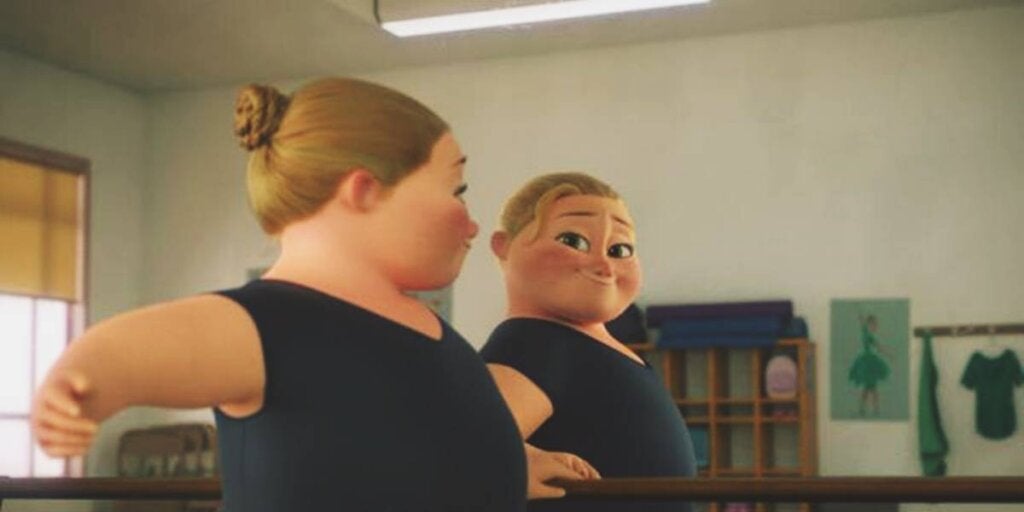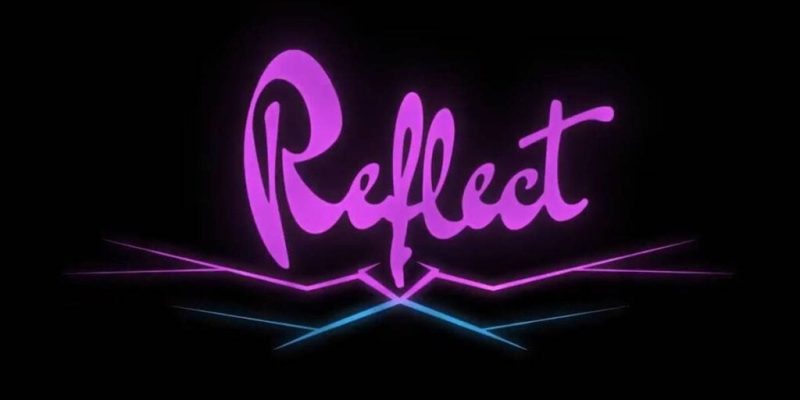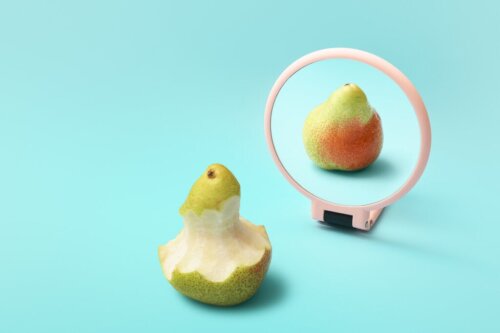The protagonist of the new and successful Disney short is called Bianca. Her dream, like that of many other girls around the world, is to be a dancer. This isn’t unusual in itself, except Bianca is insecure about her body. Indeed, her figure isn’t like that of most ballet dancers. However, this doesn’t detract from the grace or technical abilities of her dance skills.
Nevertheless, she does experience discomfort, doubts, and even the rejection of her own image. It shows us that, in a world that tries to convince us of the existence of ‘normative’ and ‘non-normative’ bodies’, it doesn’t take long for children to integrate these harmful messages. They do it simply by looking in the mirror and comparing themselves with the unreal figures they see in the movie and advertising industries.
Bianca fights against her own reflection because today’s culture has made her believe that there’s something wrong with her. Her large size, her shape, and her image aren’t in tune with the models of beauty she sees as worthwhile. How can she enjoy and grow through dance when she’s only a child and suffers from body dysmorphia? That’s the interesting message provided by the latest production from Disney.
The film will premiere on Disney+ and is the result of one more step in the attempt to normalize diversity by the animation company.
Bianca, the girl with body dysmorphia
In 2016, the Disney factory started an interesting project called Disney’s Short Circuit. The company’s employees submit ideas for animated short films. Each season, a series of proposals are selected and transformed into beautiful short films. This year, one stood out among all the rest.
Reflect was the most recent short film to receive the most attention. It was directed by Hillary Bradfield, an outstanding animation artist who was also behind titles like Frozen 2 and Encanto. A few hours after its premiere, the film went viral on TikTok. It rapidly became the topic of conversation for millions of young people who explained that they saw themselves in the same situation as the protagonist.
Hillary Bradfield said that she was inspired by the body-positive movement in the making of this short film. She also claimed that sometimes, people must take a trip to the other, darker side of the mirror. In fact, it’s only when we hit rock bottom and give way to self-acceptance, that the most beautiful things in us emerge.
From reflection to reflection
Bianca is a dancer but her body doesn’t fit the image of the kinds that dominate the advertising, cinema, and tv industries. When she’s in her ballet class and sees her classmates, she’s self-conscious. She feels different, as well as insecure. Furthermore, she fails at the dance steps, and can’t keep up with the others. In addition, she suffers from body dysmorphia, a condition in which the individual rejects their own body.
Suddenly, the mirror breaks and the girl enters another dimension dominated by fantasy. The breaking symbolizes her mental universe, full of fears, insecurities, and a hatred of her own reflection. In effect, it represents the broken way in which she views her own body.
However, gradually, Bianca gets carried away by the music. As she does so, the mirror fades. Her movements become graceful. She’s dancing perfectly and feels good about herself. When she realizes this, she sees that she’s dancing with her other partners in perfect harmony. She starts to trust herself.
Mirrors are the surfaces where we turn our hatred and rejection toward the images that are reflected in them:those of ourselves. We do it because of a society that distorts our thoughts by making us believe that there’s something wrong with the way we look.
Disney and diversity
Reflect, the short film about body dysmorphia is one of a series of productions that seek to promote diversity. In this case, it’s promoting the body positive idea. It defends the idea that all bodies are acceptable, normative, and beautiful, no matter their size, shape, or even skin color.
Disney is aiming to be a pioneer in diversity issues and has released several titles that revolve around this theme. For example, Moana, Encanto, Turning Red, and Coco demonstrate cultural, ethnic, and aesthetic values. There’s also Lightyear, which gave a nod to the LGBT community by showing, for the first time in a Disney production, two women kissing.

The need to empower children in self-esteem and self-acceptance
Some might wonder if it was necessary to make a short film about a girl suffering from body dysmorphia. Moreover, Disney has traditionally sold children images of ideal princes and princesses with fantastic lives. Indeed, this company has previously contributed to distorting many bodily and even emotional models, convincing us, for example, of the wonders of romantic love.
However, it’s time to break taboos and broaden the spectrum to include those who also deserve to be protagonists in a Disney production. Creations like Reflect are necessary because they’re a ‘reflection’ of our population, one that’s so diverse in terms of bodies. Indeed, plus-size children exist. They also dream of dancing and succeeding. They’re talented, beautiful, and capable of anything.
We need to empower children in self-esteem, self-love, and body acceptance. Disorders such as body dysmorphia cause depression, anxiety, suicidal behavior, and eating behavior disorders (ED). So films like Reflect act as models of inspiration and normalization.
The post Reflect: The New Disney Short About Body Dysmorphia appeared first on Exploring your mind.



















Comments